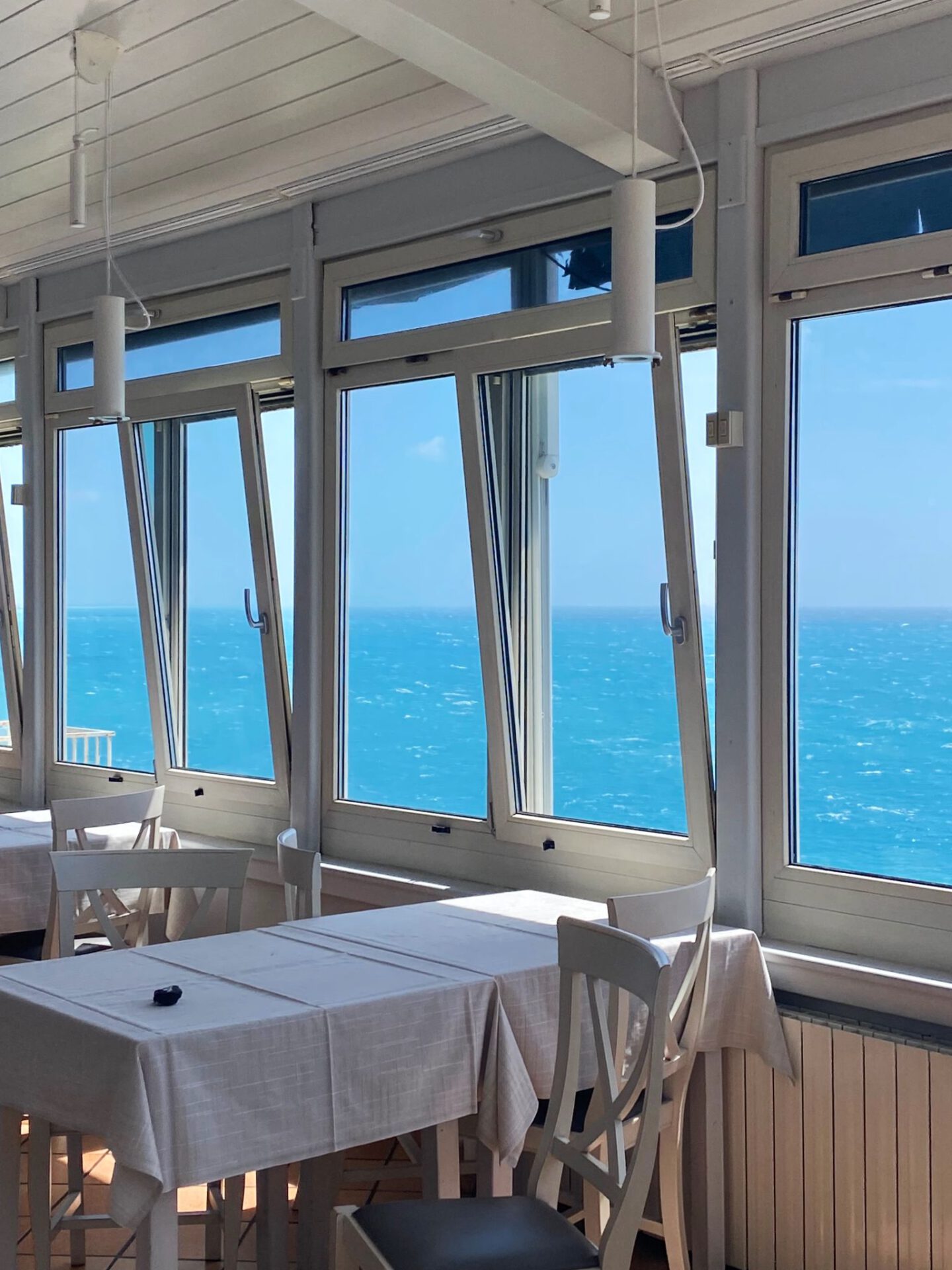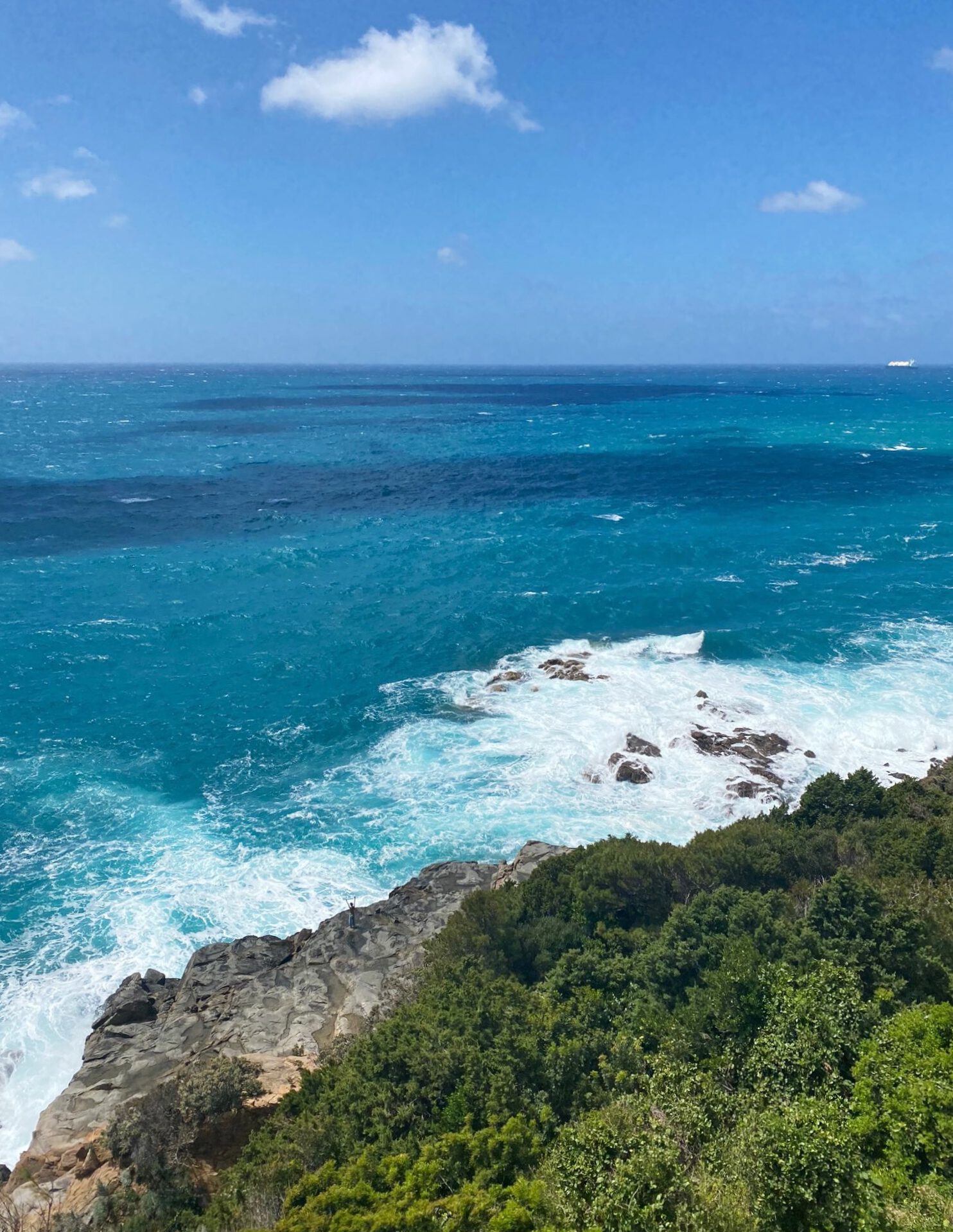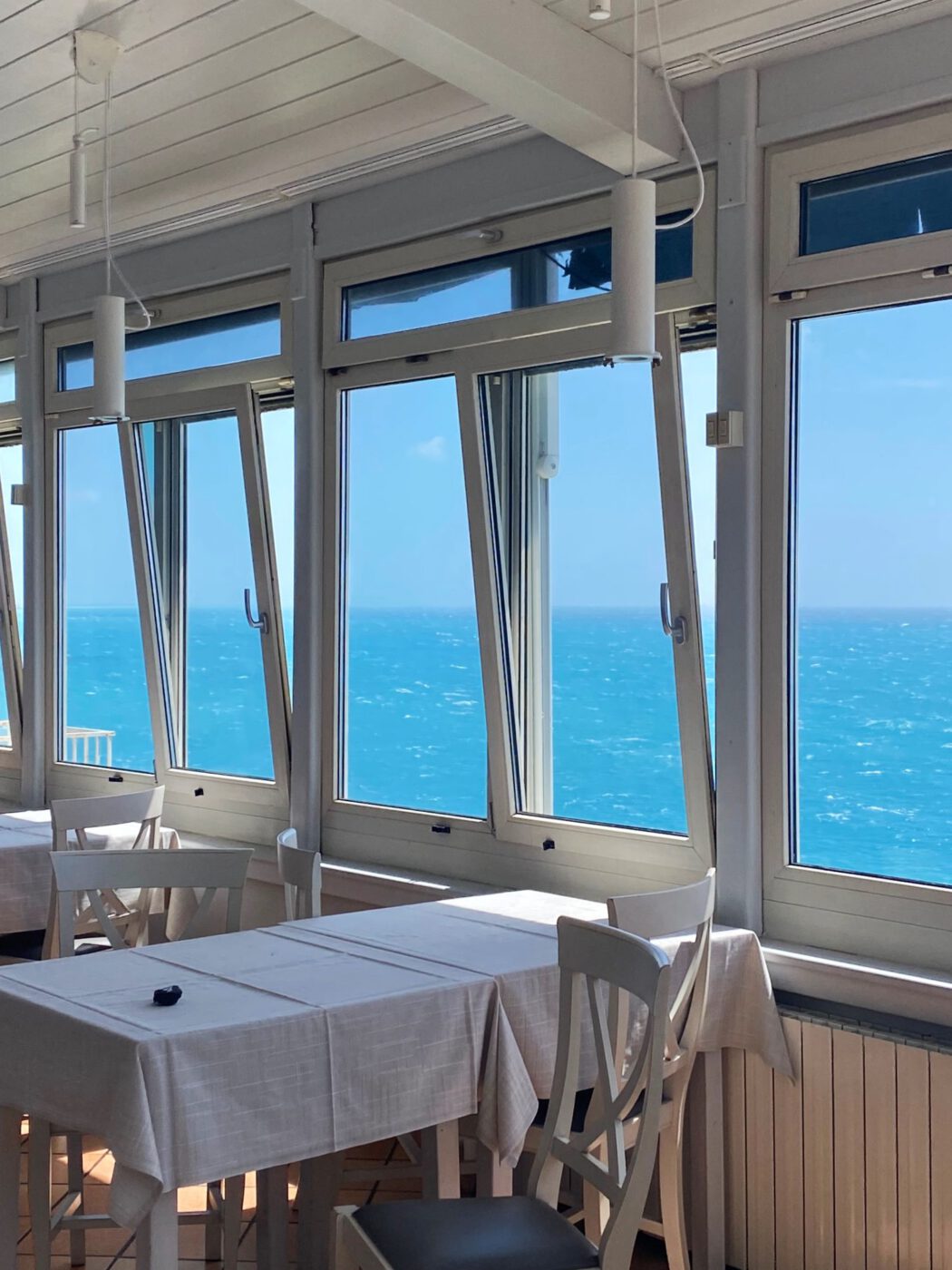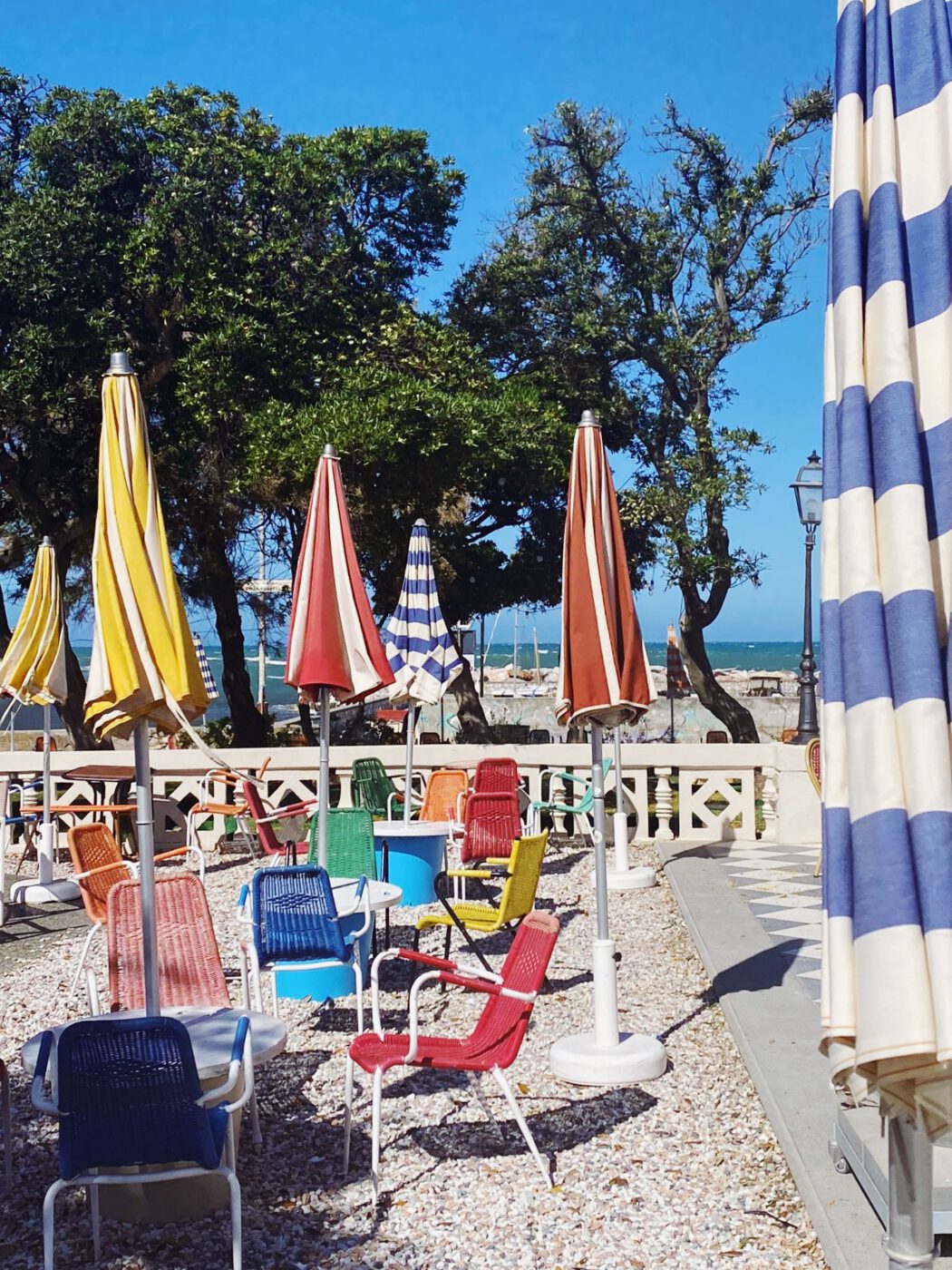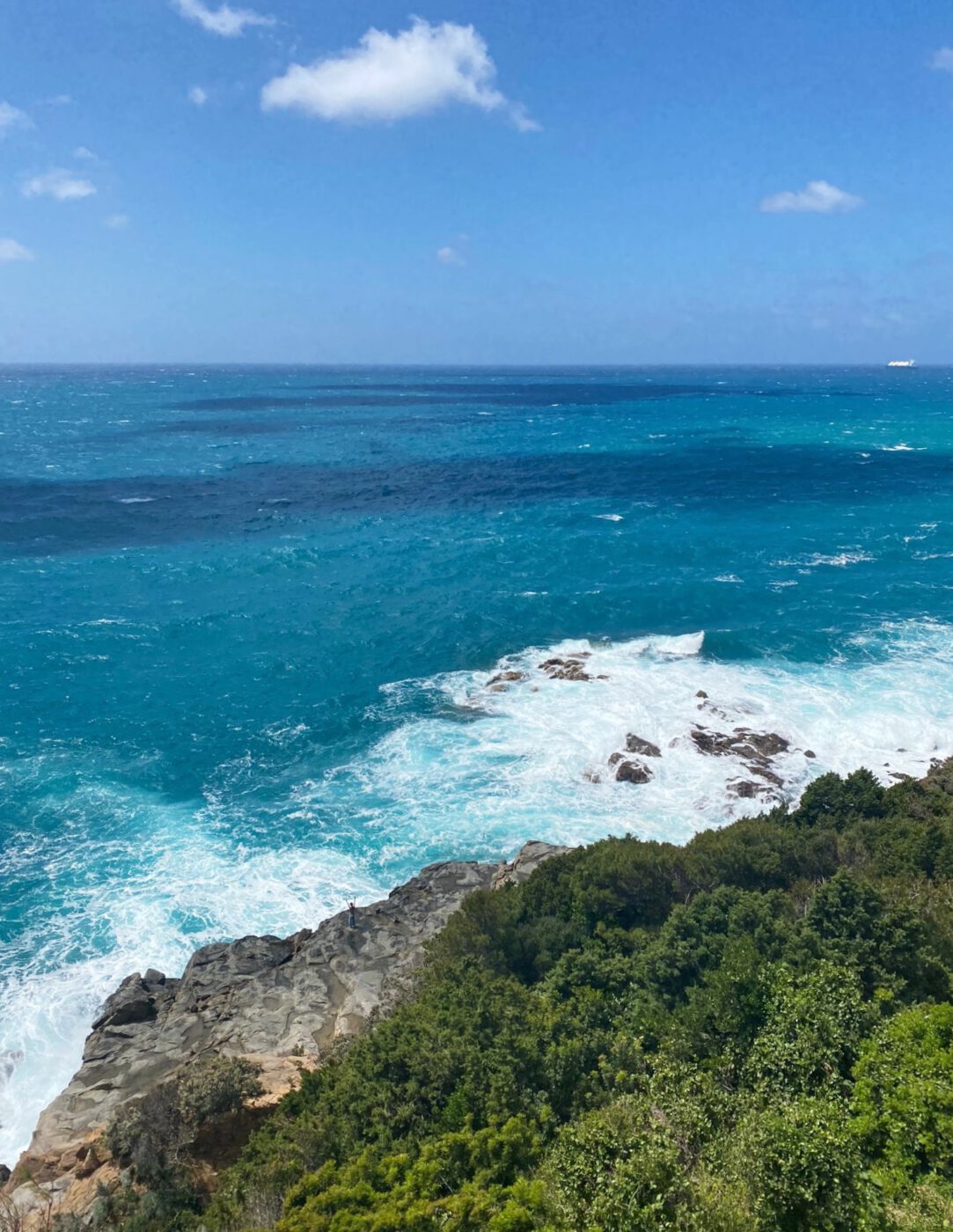As he opens a sun-bed, Vittorio Gassman’s voice is certainly recognizable, but the place where he and Jean-Louis Trintignant find themselves in this night-time scene from the film Il Sorpasso (1962) is less so. After a daring trip out of town that began in Rome, the two protagonists of Dino Risi’s film end up on a thin stretch of beach in Castiglioncello, Tuscany, as much unknown to the audience as the characters are to each other. While this exact beach no longer exists, and the Bagno Ausonia–where the two play table tennis–is actually composed of various terraces, the beautiful pine forest, Pineta Marradi, and the general vibe of the beach remain unchanged.
When Risi chose Castiglioncello as the location for some scenes of Il Sorpasso, he found the perfect combination of a graceful yet splendidly Italian atmosphere that pervades the entire film. Yesterday, as today, Castiglioncello fosters those perfectly lazy routines, those that epitomize the dolce far niente. Here, people have always preferred playing cards instead of going out to the sea, a cinema in the pine forest to a trendy night club, an aperitivo in the piazzetta to a luxurious dinner.
Although Castiglioncello is quite a culturally active town (just look at the calendar of exhibitions and events at the Pasquini Castle), it delightfully holds a vintage atmosphere, one of the 1960s’ famous actors, directors, and politicians who chose it as their holiday destination. In 1958, four years before Il Sorpasso made it famous, Alberto Sordi took a liking to this village, finding it perfectly different from Versilia’s mundanity and Rome’s chaos. It was an ideal summer getaway for someone who, like him, wanted to spend the summer reading and napping and out of the spotlight. He bought Villa Corcos, a castle-like building near Punta Righini, which still stands tall behind a tight hairpin curve. “Here I find myself again,” he would tell his friends, while he strolled along the sea to Caffè Ginori.

Sordi isn’t the only one who took to this secluded stretch of sea for long summers. Screenwriter Suso Cecchi D’Amico nicknamed Castiglioncello “the creative holiday” because its beauty and quiet inspired her films, and she and Bice Valori were the protagonists of Castiglioncello’s cultural life for many years. Paolo Panelli, Renzo Montagnani, and Luchino Visconti all vacationed here, and Marcello Mastroianni, introduced to the place by his wife, called it a “paradise on earth”–though this safe haven he so loved refers less to the sea and more to the Ciucchi brothers’ garage on Via Fucini, where he spent many a Sunday with his friends Montagnani, Panelli, and Valori. This so-called “Club of the 4 Smooth Tires” became a perfect hideaway for any of the townspeople or characters from Cinecittà to enjoy secluded, peaceful moments, and it became one of Italy’s few spots where there was no barriers or no distinctions: at this circolo, socializing was free and open to all.
But Castiglioncello’s charm goes back further to the end of the 19th century, to the years when the Macchiaioli painters came here to winter and work. The town welcomed musicians and intellectuals, like historian and theater critic Silvio d’Amico, writer Emilio Cecchi (father of Suso Cecchi d’Amico), and journalist Aldo Valori (father of Bice Valori). Then, in the 1920s, Castiglioncello became a popular meeting place for musicians such as Pirandello, who spent his summers playing bocce in the pine forest and writing to Marta Abba. In a letter dated August 4th, 1932, he wrote: “The place is charming here: a paradise. A silence! A stillness! I am enchanted by natural beauty; far superior to that of Viareggio and Camaiore and Lecco; I tell you, a real paradise. I stay all day working, in front of the sea.”
Indeed, Castiglioncello is located in a rather exceptional part of Tuscany along the stunning Etruscan Coast, just 15 km from Livorno. Here, the coastline is steep, with cliffs and stones dropping sheer into the sea, offering breathtaking views and sunsets. The long flat beaches of Versilia give way to small, secret bays, whose rocks are lapped by crystal-clear waters. On clear sunny days, the islands of Gorgona and Capraia appear on the horizon, so close you could almost touch them. As the day draws to a close after a fiery orange sunset, the same ceiling of stars that Gassman once marveled at appears once again. And this is the true nature of Castiglioncello: discreet, elegant yet affordable, and relaxed, a place where anyone who visits can enjoy the incredible luxury of boredom.

HOW TO GET THERE
Castiglioncello is accessible by a regional train line from Florence, Pisa, and Livorno. Beach access is about a 10 minute walk from the train station. Alternatively, the town is reachable by car from any direction, and the drive is about 1 hour 45 minutes from Florence. Parking, however, is quite limited.
THE BEACH
The beach at Castiglioncello is accessible via a few small entry points and steep stairways. Much of the sandy beach is taken up by bagni–which are less expensive compared to their Forte dei Marmi counterparts–although small patches of free beach exist on the sand or further on the edges along the rocks. You’ll want to get there early for prime spots at either the bagni or spiagge libere.
WHERE TO EAT & DRINK IN CASTIGLIONCELLO
Caffè Ginori – This historic cafe, open since 1947, is perfect for a morning caffè and pastry. Snag a seat outside under the burgundy umbrellas or sit inside the ornate bar room, relatively unchanged since Alberto Sordi frequented the spot.
La Lucciola – The best place for pranzo al mare, where you eat on a platform right on the sea. Get whatever the fresh catch of the day is cooked al forno with potatoes. La Lucciola doubles as a bagno, so you can also rent a lounge chair and spend the day sunbathing on the rocks.
La Piazzetta – Around 5 or 6 PM, join the crowd of locals heading here for a simple, cheap aperitivo. An icey spritz, bowl of potato chips, and card game, if you so desire, perfectly rounds out the evening.
Il Cardellino – Open since 2009, this restaurant is a touch more refined, calling back to the Dolce Vita era with its stunning terrace overlooking the sea. Open 365 days a year with options from breakfast to dinner, we like it best in the summer around 8 PM to watch the sun set over a huge plate of linguine ai crostacei e salicornia.
La Baracchina – Find a full seafood menu at this popular clifftop and sea-facing restaurant, with the freshest options and daring combinations. Their dining room is entirely surrounded with glass windows overlooking the water, especially perfect for eating seaside on a windy, fall, or winter day. Must Order: The shrimp tartare and the tuna tartare with avocado
Il Fortullino – On the coast right by a pine grove between Chioma and Castiglioncello, this spot has a minimally equipped beach and small kiosk with a vintage feel. Simple and well-organized, the chill and unpretentious vibe calls back to what the Cinecittà so loved about this beach in the 60s. For lunch, take a schiacciata with prosciutto, zucchini, and basil; cash only.
Bagni Nettuno – In the Baia Del Quercetano, this beach club has a number of lounge chairs right on the sand along with a nice bar to get coffee or aperitivo, which you can take back to your lounge chair. Open the entire day, it’s also a great stop for a casual pranzo al mare with local produce and fresh seafood.
